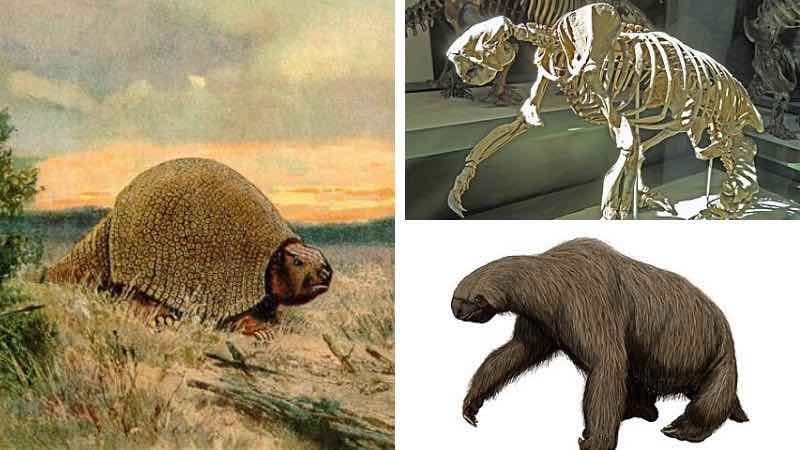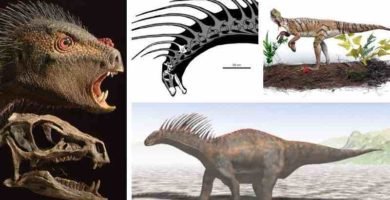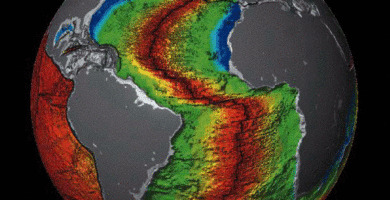
by Rafael Cartay April 10, 2020
In the Cenozoic Era, giant animals existed in the Amazon and fossils have been found that allow us to recreate them today. However, these animals are NOT dinosaurs, no matter how big they are, but species with particular classifications — some extinct and some not.
In fact, some of these giant animal species still live in the Amazon and are very common as we will see below.
But before we dive into the Cenozoic Era, let’s recap.
We have seen a brief history of the Amazon landscape where we explained how the Amazon was formed from Pangea to the present day.
Until the Mesozoic, formed by the Triassic, Jurassic and Cretaceous periods, large animals such as dinosaurs predominated.
In the Triassic (from 230 million years ago), the first dinosaurs appeared.
In the Jurassic (190 million years ago), dinosaurs, birds and mammals abound. We are still in Pangea.
In the Cretaceous (135 million years ago), flowering plants appear and dinosaurs become extinct. The separation of Gondwana occurs, and in the end the Andes rise.
Cenozoic Era: short summary
The Cenozoic Era is a very important time from the point of view of fauna and flora.
It is a geological era, which goes from 70 million years ago to the present day, formed by the Tertiary and Quaternary periods, in which placental mammals, horses, whales, bats, and monkeys, up to the genus Homo, appeared throughout its different epochs.
From a geological and climatic point of view, this era saw the union of North and South America, the Ice Age and the Interglacial period.
The genus Homo arose in the Pleistocene, and the “modern” human arose between 12,000 and 11,000 years ago.
Animals of the Cenozoic Era in the Amazon
During the Tertiary period of the Cenozoic Era, in the Eocene and middle Miocene, a fauna of marsupials, armadillos, anteaters, sloths and native ungulates developed in the Amazon basin.
One of the most representative mammals of that era was the baguatherium, a rhinoceros-like herbivore that inhabited the area of present-day Bagua, in the northern part of the Peruvian Amazon.

Baguatherium / Pyrotherium
Author Nobu Tamura CCbySA
Some caviomorph rodents also emerged at that time, such as the current capybara, also called the ronsoco or chigüiro (Hydrochaerus hidrochaeris), one of the oldest animals in South America, which arrived from Africa some 42 million years ago.
Then came the small primates, about 26 million years ago. Larger monkeys, such as the ancestor of today’s capuchin monkey, arrived around 18 million years ago.
Some 13 million years ago, the Amazon was inhabited by pink dolphins of the genus Inia and several species of crocodiles, such as the dwarf caiman (Paleosuchus), the large Purussaurus and the duck-billed caiman (Mourasuchus).
Then comes a great variety of insects and arachnids.
Caimans, gavials and turtles were already living in the waters of the Amazon.

Examples of new species from the Great American Biotic Exchange, an event caused by the tectonic creation of the Isthmus of Panama in the late Pliocene. South American (neotropical) species whose ancestors migrated to North America are green (olive), North American (Nearctic) species whose ancestors migrated to South America are blue.
Source: Woudloper / CC BY-SA (https://creativecommons.org/licenses/by-sa/1.0)
This Amazonian fauna was the result of an active American biotic exchange between the fauna of North and South America, through Central America, facilitated by the formation of the Isthmus of Panama, between 3.1 and 2.7 million years ago.
Two mastodon fossils found in Ecuador
Alexander von Humboldt found, for example, a mastodon molar on the slopes of the Imbabura volcano, in the Ecuadorian province of Imbabura.
Then, in 1922, the priest Dr. Juan Félix Proaño found a mastodon, which he named Masthodon chimborazi, in the vicinity of Ríobamba, in the Ecuadorian province of Chimborazo.
These two provinces are located in the highlands of Ecuador.
Other giant animals
However, there had been few finds of fossils, or parts of fossils, in the basin regions.
As large animals such as dinosaurs disappeared, others, also of large size, emerged at the beginning of the Miocene, some 23 million years ago. They included crocodiles, sloths and giant armadillos.

Source: Heinrich Harder (1858-1935) / Public domain
The larger animals died, while the small and medium-sized ones survived, feeding mainly on insects and aquatic plants.
After the death of large predators, such as dinosaurs, competition for food and space decreased, and a diverse fauna thrived and populated the tropical forests.
Giant crocodiles found in the Amazon
Guerra-Turin (2011) mentions the existence of a large crocodile or caiman that was about 14 meters long and weighed about 9 tons.
He says its head was 1.3 m. He points out that this crocodile, found during an expedition financed by the University of Toulouse and the French company Devanlay, was the largest predator in the Amazon when the current jungle location was covered by sea some 15 million years ago.
At that time in the Amazon there was a variety of crocodiles.
A team of paleontologists, who published their finding in the journal Proceedings B, of the Royal Society, discovered in 2014 in the Peruvian jungle, in the area of Loreto, fossils of seven species of crocodiles, which lived there about 13 million years ago.
In 2011, Peruvian and Austrian paleontologists, led by Austrian Klaus Honninger, discovered in Loreto the fossilized remains of a giant crocodile that is nearly 20 million years old.
Many of these findings are not well documented in specialized scientific journals, with the exception of National Geographic, and the press is the medium generally used to record these discoveries.

1. Purussaurus brasiliensis: body length of 12.5 m according to Aureliano et al. (2015), skull shape according to Aguilera et al. (2006)
Sarcosuchus imperator: body length of 11-12 m according to Sereno et al. (2001)
3. Deinosuchus riograndensis: body length of 10.6 m according to Farlow et al. (2005), shape of the skull according to Schwimmer (2002)
Gryposuchus croizati: body length of 10.15 my skull shape according to Riff and Aguilera (2008) [6].
5. Euthecodon brumpti: body length of ~ 10 my skull shape according to Storrs (2003) 6. Crocodylus porosus: measuring 6.32 meters according to Wood (1983)
Source: original version (2011): Smokeybjb modified by: Giant2236 / CC BY-SA
In Acre, in the Brazilian Amazon, the jawbone of a purussaurus was found , which is a giant crocodile about 12 m long that lived more than 8 million years ago in swamps and rivers of the Amazon rainforest.
Related articles:
This post is also available in:
![]() Español (Spanish)
Español (Spanish)



